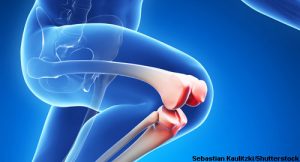 More than 1,186,000 cumulative joint replacement surgeries were performed between 2012 and 2017, with the majority of these procedures comprising total knee and hip arthroplasties.1 Over the next 10 years, these procedures are expected to increase by more than 170%.2 Often, patients with rheumatoid arthritis (RA) who experience joint degeneration are candidates for these surgeries. But infection and disease flares can negatively affect postoperative outcome physical recovery in this patient population.
More than 1,186,000 cumulative joint replacement surgeries were performed between 2012 and 2017, with the majority of these procedures comprising total knee and hip arthroplasties.1 Over the next 10 years, these procedures are expected to increase by more than 170%.2 Often, patients with rheumatoid arthritis (RA) who experience joint degeneration are candidates for these surgeries. But infection and disease flares can negatively affect postoperative outcome physical recovery in this patient population.
A deeper understanding of postoperative total knee and hip arthroplasty flares in RA patients may help improve postoperative recovery. This understanding was the aim of recent research conducted at the Hospital for Special Surgery, New York, according to lead investigator Susan M. Goodman, MD, a rheumatologist at the Hospital for Special Surgery and a professor of medicine at Weill Cornell Medical College.3
Postoperative Flare
The purpose of the study was to determine the rate, characteristics and risk factors of patient-reported flares of RA within six weeks of surgery, she explains. To conduct this research, Dr. Goodman and her team recruited consecutive patients with RA prior to elective total hip or knee surgery. Researchers followed up with patients through weekly telephone questionnaires for six weeks. The final follow-up was held at each patient’s six-week postoperative visit.
The initial preoperative evaluation occurred within two weeks of surgery and included a comprehensive rheumatology evaluation, with joint counts, medications, serologies and inflammatory markers. It also measured disease activity using the Disease Activity Score in 28 joints and Clinical Disease Activity Index. The weekly questionnaire included the OMERACT Flare Questionnaire regarding flare status.
Next, the investigators looked at all the information collected during the perioperative period to determine whether or not to classify each patient as a flarer. This determination was made before analyzing the information collected via multivariable logistic regression to identify the baseline characteristics associated with RA flares after surgery.
“Surprisingly, our analysis demonstrated that disease activity at the time of surgery, and not medication management—whether we stopped the medications or not—was associated with post-op flares,” Dr. Goodman says.
Risk Assessment for Optimal Outcomes
Currently, patients with active RA are advised they are at risk for a flare after surgery, and Dr. Goodman says care management for these patients hasn’t changed. She and her team are in the process of analyzing patient outcomes from the study at one year after surgery to determine if and what care changes may be applied.
“Our hypothesis at the time we initiated this study was that patients who flare may be less successful with their postoperative physical therapy and, therefore, may not have improved as much one year after surgery,” Dr. Goodman says.

